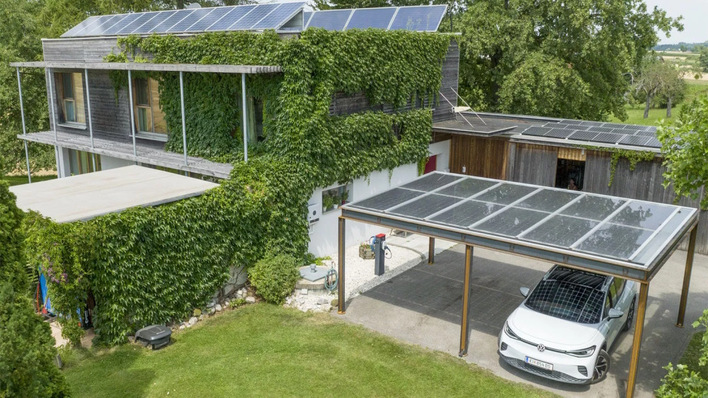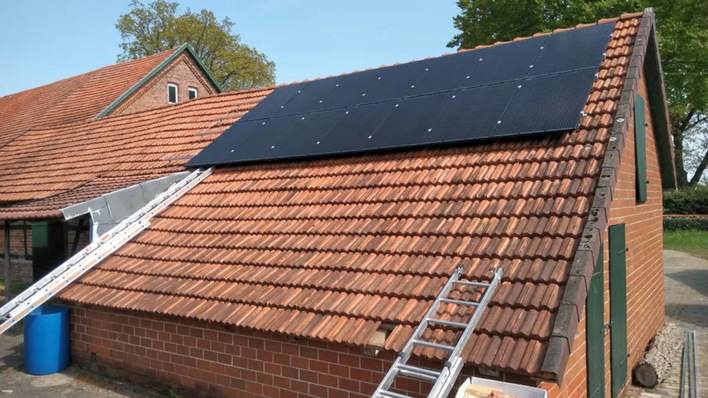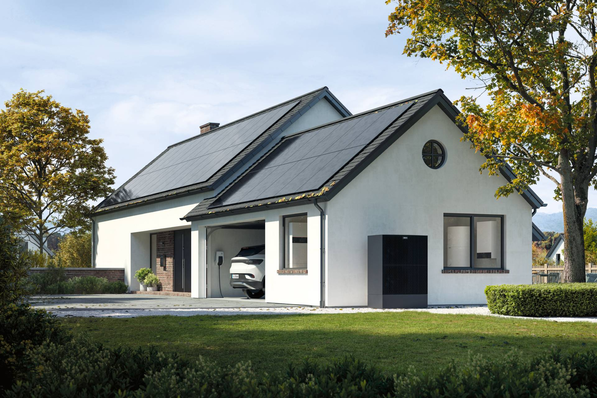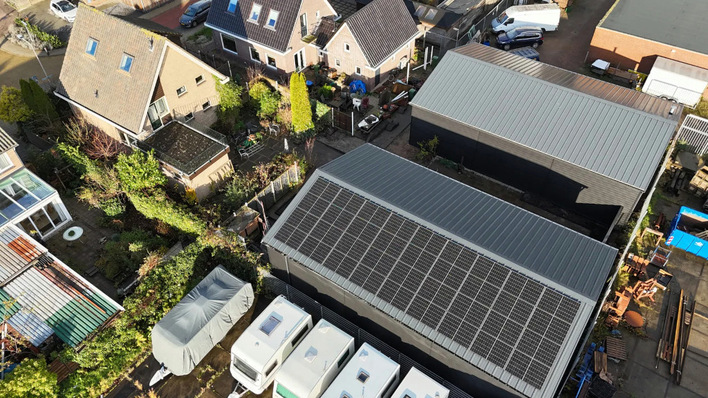Now the engineers have integrated the heat exchanger invisibly into the roof. This acts as a heat source for a brine heat pump. The heat pump now receives heat from above instead of below. This eliminates the need for one or more expensive boreholes in the ground - which, by the way, are not permitted everywhere.
See also: New development of a solar heat collector for facades
Not only that: the brine-water usually brings up heat of 10 to 14 degrees Celsius from the ground. The solar roof, on the other hand, delivers up to 30 degrees Celsius to the brine heat pump even at sub-zero temperatures, a delta of a full 40 degrees to the outside temperature. Accordingly, almost any brine heat pump can be used. In this combination, the entire heating demand of the house for heating and hot water can be covered - even in winter.
Also interesting: High-efficiency infrared heating system








